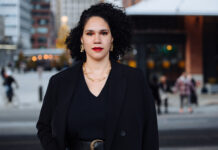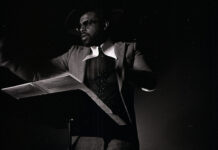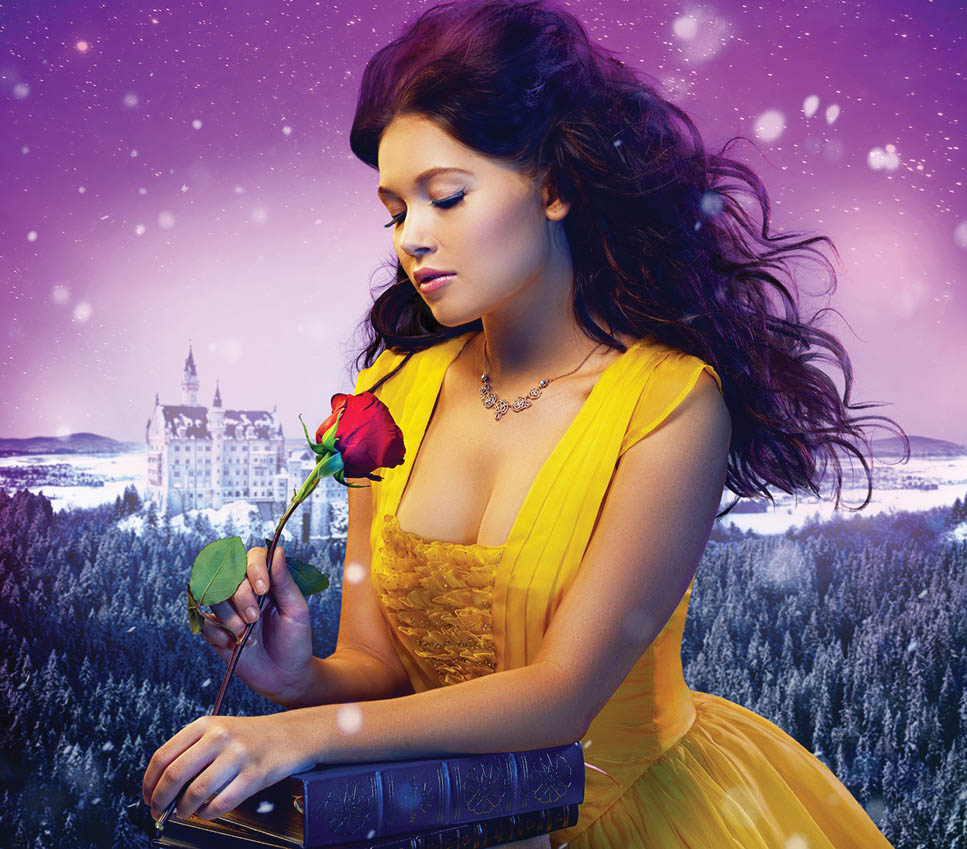“Pantomime [pan-tuh-mahym]
Also called Christmas pantomime. A form of theatrical spectacle common in England during the Christmas season, generally adapted from a fairy tale and including stock character types who perform songs and dances, tell jokes, etc.”
That is the formal definition of “panto†as found at Dictionary.com. And that is precisely the kind of shows Lythgoe Family Panto has been presenting for the past several years in Pasadena. This year is no exception with their new show, Beauty & the Beast – A Christmas Rose opening tonight. The growing popularity of their shows finds them not in their usual home at the Pasadena Playhouse, but in the larger Pasadena Civic Auditorium.
Inspired by the classic story (not the Disney version), Beauty & the Beast – A Christmas Rose stars Kelli Berglund as Belle, Jonah Platt as The Beast plus James Snyder, Harrison White, Gedde Watanabe, Jon Tartaglia and Jared Gertner.
I spoke with Kris Lythgoe (book writer) and  producer Becky Lythgoe about their shows and their mission to make panto a gateway show for future theatregoers. If the names sound familiar, Nigel Lythgoe Productions has produced American Idol, So You Think You Can Dance and other shows.

Is there a difference between what American audiences like in panto versus what the British, who have grown up with it, expect?
Kris: Absolutely. The first element is the bawdiness that UK audiences accept, the double entendre. We do touch on a couple, but we don’t emphasize that. The British versions are built around that, here we don’t do that. Also the big difference is we really try to cast Broadway names and quality vocals. In the UK they kind of get the odd soap actress who is trying to sing. What you find in England is that they are willing on the actress to hit the top not even though there’s no chance they’ll ever get that. The US audience won’t accept that.
The first panto you produced at Pasadena Playhouse was A Snow White Christmas with Ariana Grande and Neil Patrick Harris. The ad-libbing by the entire cast made for a very long performance. What have you done to streamline the running times, particularly since these shows are aimed for younger audiences?
Becky: We have found the ways the audience responds. I think it’s so beautiful and free for our cast to get to improve, but we’ve really learned now over the years that if you are a comedy role, you are a comedy role and the rest of you need to stick to the script.
Kris: We say the audience is the additional character. When you are rehearsing you don’t have audience reactions. You don’t know where all the interactive stuff, the magical part about panto, will happen. The openings are always the first time we have an audience. We make the cuts the next day so it’s one hour and forty-five minutes after opening.
It was only recently that panto has seen resurgence in the United States. Not just with your productions, but with other companies as well. What do you think is behind the growing popularity of panto?
Becky: I feel like that kind of Shrek tongue-in-cheek comedy has come back into our world. Things are naturally more interactive now. You have interaction with people in a way you never had before. We made it relevant in our family. They saw the landscape and there was not theatre the family could all enjoy.
Since you brought up Shrek, what do you think children see as the common denominator between what you are doing on stage and what films like Shrek and companies like Pixar are doing with animation?
Kris: Our big underlying motivation is to get kids into theatre. We get these kids coming out of the theatre saying “that’s the greatest movie I’ve ever seen.†They are fairytales and we know and love them and we put in pop songs. Shrek did that, too. The comedy is kind of the same. It’s a natural fit really.
Is there any story that you think is too sacred to do as panto?
Kris: I would like a crack at anything to be honest. I’ve had people come to me and say, “Can you do a panto version of The Grinch or A Christmas Carol?†There’s always a means. Grinch is copy written, but Charles Dickens you could do. I don’t think there’s anything I wouldn’t like to do as panto.
What is the story that seems the most challenging to do as panto?
Kris: It might be even this one we’re doing this year. The Disney version is so current now and the music is so good, that it was really a challenge. It was a challenge to find pop music. I looked at the top 20 songs and 17 have explicit lyrics. To really find the family lyrics that would work was a challenge. I think we cracked it.
Is panto theatre a gateway drug for younger audiences moving on to explore other forms of theatre?
Becky: That’s a perfect way to describe it. I would go to school and talk about Annie or South Pacific and [my friends] would roll their eyes. Glee and those television shows bring pop music and iconic people all coming together, so it’s familiar for the audience and they are hoodwinked into loving musical theatre.
Kris: Panto in England originally came out because the family would put on shows for kids and they would get presents. It was a community sense of giving to the kids. From our point-of-view, we really want to get the kids engaged and into theatres. We really engage the community. There are very few family theatre experiences. I think that has been lacking in US theatre for a while, grandparents able to take grandkids. There needs to be a family element in theatre.
Becky: It’s so fantastic to see these kids realize it’s just as good as seeing a movie; bringing in other friends and family to see theatre and get to sing along. They fall in love with theatre because of panto.
If you aren’t near Pasadena, the Lythgoe’s have Aladdin and His Winter Wish at the Laguna Playhouse, Peter Pan and Tinker Bell – A Pirates Christmas at The Balboa Theatre in San Diego and Sleeping Beauty and Her Winter Knight in Houston.
Photo Credit: F. Scott Schafer
Â











